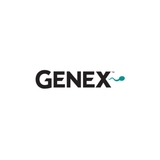
3 minute read
So Much Data! Where do I Start?
by GENEX
By Leah James, Dairy Marketing Manager, GENEX
What comes to mind when thinking about progressive dairy herds? Good management? Cow comfort? Cutting-edge technology? All these things are critical for profitability in this extremely tight dairy economy, but what about the advancement that lies within a semen tank? Often overlooked, but extremely important to the success of dairy operations, is the genetic component.
In a recent presentation, Dr. Francisco Penagaricano, Assistant Professor of Genetics and Genomics at the University of Florida, discussed genomic and genetic selection. He shared a graph outlining historical milk yield growth in pounds. It shows that 43% of the industry’s production growth is attributed to management and 57% can be attributed to genetics.
Genetics is important, but how important?
There are a lot of data points available for use in genetic selection, and it has led to never-before-seen rates of genetic improvement. Consider this ... for Holstein sires entering into A.I. service, the average gain in Lifetime Net Merit (NM$) per year from 2005-2008 was $38. The average NM$ gain from 2009 to 2012 was $61 per year. For 2013 through 2016, the average NM$ gain per year increased to $84. (Source: https://www.uscdcb.com).
Genomic selection will achieve genetic gain, but what about reliability?
Genomics has allowed genetic progress to happen at a much faster pace than in previous decades, but the reliability levels on genomic-proven sires are slightly lower than their daughter-proven counterparts. For instance, the average NM$ reliability of a daughter-proven Holstein sire is 90% and the average NM$ reliability of a genomic-proven Holstein sire is 75%. For Jerseys, it's 88% versus 70% reliability. How does one balance the risk?
GENEX has always recommended selecting on an index, and in this genomic era it is more important than ever before. Dr. Penagaricano emphasizes this point as well: “We have to select genetics on economics” (and indexes).
With so much data available, it is easy to ultra-focus on one or two traits which could narrow genetic selection. Instead, redirect focus to an economic-based index to ensure selection of the best genetics as a whole.
Dr. Penagaricano also suggests using a team of high-ranking genomic sires to balance their slightly lower reliabilities. Increasing the number of sires used, in turn, increases the reliability of achieving genetic goals for the whole herd.
The most reliable strategy is to use a group of young genomic-tested bulls. While 1 genomic-proven bull may have a 70% reliability, using 3 genomic-proven bulls increases the reliability to 90%, using 6 bulls increases the overall reliability to 95%, and using 12 bulls increases the group's reliability to 98%.
Selection through the GENEX Ideal Commercial Cow™ (ICC$™ ) index matches Dr. Penagaricano’s recommendations. This index is directly tied to farm economic profitability. It also incorporates data from multiple sources and is the only index specifically designed to select animals that are ideal for a commercial dairy environment.
What does selection for the ICC$ ™ index achieve?
Just as the name implies, the ICC$™ index creates ideal commercial cows that are problem free, fertile and moderate in frame size, maximizing efficiencies.
GENEX Senior Dairy Account Manager Pete Weber from Wisconsin uses the ICC$™ index to help members and customers achieve long-term success. “Using the ICC$™ index as your selection index will create the type of cows needed to be a profitable dairy today – cows that are long lived, healthy and high producing.”
Dan Cerretani, GENEX Strategic Account Director in New York, sums up why progressive producers choose the ICC$™ index. “It considers some very complex genetic and economic relationships and delivers an easy-to-use selection tool that’s all about creating a sustainable cow!”
What if I want to narrow my genetic focus?
The ICC$ ™ index was strategically constructed as the summation of sub-indexes enabling producers to easily customize their genetic selection. The ICC$™ index for Holsteins includes five sub-indexes which represent critical areas of management for commercial herds. Similarly, the ICC$™ index for Jerseys includes three key sub-indexes. This composition makes the ICC$™ index unique, because each sub-index can be used to target focus on a specific management area and each is directly tied to economics and bottom‐line profitability.
When narrowing or targeting genetic focus, start by sorting the sire list by the ICC$™ index. This ensures a look at the whole picture without getting too focused on individual traits. Selection on the ICC$™ index emphasizes moderate frame size and heightens focus on health and fertility while also considering yield traits.
Once the sire list is sorted on the ICC$™ index, then sort based on the sub-index most appropriate for the dairy. For example, if a Holstein herd is choosing sires to use in heifer pens, first sort by the ICC$™ index and then by the Calving Ability (CABL$) sub-index. If a herd wants to increase production levels, for Holsteins utilize the Production Efficiency (PREF$) sub-index and for Jerseys the Cheese Maximizer (ChMAX$) sub-index.
Data is Exciting!
At the end of the day, all of this data is exciting. The amount of progress that can be made through genetics is happening faster than ever before. To ensure one doesn’t get lost in the sea of data, keep in mind these key genetic golden rules:
1. Selection for genetics and good farm management must go hand‐in-hand to reach farm goals.
2. Using the highest team of genomic sires will yield the most progress and highest reliability.
3. Using an economic-driven index, such as the ICC$™ index, focuses on all-round genetic progress.
4. Target genetic focus by first selecting on the ICC$™ index and then sorting on a sub‐index.










